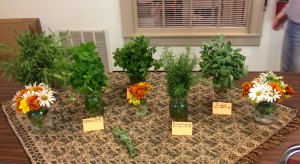Wednesday, November 16th, I attended the documentary and panel about plastic usage and waste. The colleges, Alliance for Planet Earth, held the event. The panel included, Mayor of the City of Folly Beach, Tim Goodwin, Director of Global Partnerships & Community Engagement with 5 Gyres, Lia Colabello, and Program Director of Air, Water, & Public Health at Coastal Conservation League, Katie Zimmerman. And the documentary that followed was, “Bag It: is your life too plastic?”.
I chose to attend this event out of curiosity and to hear Mayor Goodwin speak on the recent ban on plastic out at Folly Beach. I have tried my best recently to stay informed on plastic use in my own life and how our communities near and far are considering their plastic use and waste. After attending this event, the statistics and thoughts shared throughout have reconfirmed the frightening knowledge I already knew, and yet was still able to illustrate a promising future if certain steps are implemented.
Firstly, each panel member spoke and gave their thoughts on where the world is today in terms of plastic consumption and waste. Compelling facts and statistics were shared by each member, certain ones that I found to be very memorable are: 8 million metric tons of non biodegradable plastic enters the ocean annually, 5.2 trillion pieces of plastic are floating ON TOP of the ocean, 1 trillion plastic bags are used a year, and in the United States it takes 12 million barrels of oil to manufacture a plastic bag. And to bring it close to home, there are currently 700,000 tons of microplastics in the Charleston Harbor. After hearing these statistics it almost seems crazy not to have a ban on them everywhere!
This leads to the next topic mentioned, bans and their efficacy. When talking about putting a ban on one of the most prevalent materials used today, one must think how influential will this new policy truly be for our communities and environment? Some answers were provided based off the 54% of areas in the world that are currently under plastic bag free zones. In Ireland, there has been a 95% reduction rate in waste due to plastic. In San Jose, due to the 90% reduction rate in plastic bags they have seen a positive impact on storm drain blockage. When heavy rains would come, violent floods would result due to blockage in the storm drains by plastic waste.
The statistics shared, the impacts noted, and lastly Mayor Goodwin’s words on the recent ban at Folly were the most notable parts of the event for me. I was curious to know how the Folly Beach community responded to the ban, was there any backlash, and how he was moved to make this decision? Luckily, most of these questions were answered! Mayor Goodwin stated that there was 4,784 respondents to the call to action on plastic, all saying that something should be done. With this kind of positive feedback it was easy to fuel the movement towards banning plastic. Mayor Goodwin did mention that there was a small window of backlash towards the ban however. He noted that small ‘mom and pop’ shops were worried that they would not be able facilitate paper bags and that would impede on storage. But Mayor Goodwin responded by saying that plastic has not always been around, and if stores in the past were able to make do, then we can very much make it happen now as well.
Overall, I found the panel members and documentary to be very enlightening. The documentary was able to open my eyes to the fierce impact of plastic all over the world, and the panel members were able to express ways that this impact can be altered. Mayor Goodwin shared that he used to work for conglomerate, DuPont, and now he is the Mayor of the City of Folly Beach where the first ban on plastic in the state of South Carolina has been passed. Additionally, the panel members have urged students to stay involved in the issue and stay abreast on the politics surrounding the issue. If we are informed and educated we can use our knowledge to influence others, furthering our chances to make big changes.
Also, the event was a Zero Waste event and the food was provided by Grow Food Carolina!!

